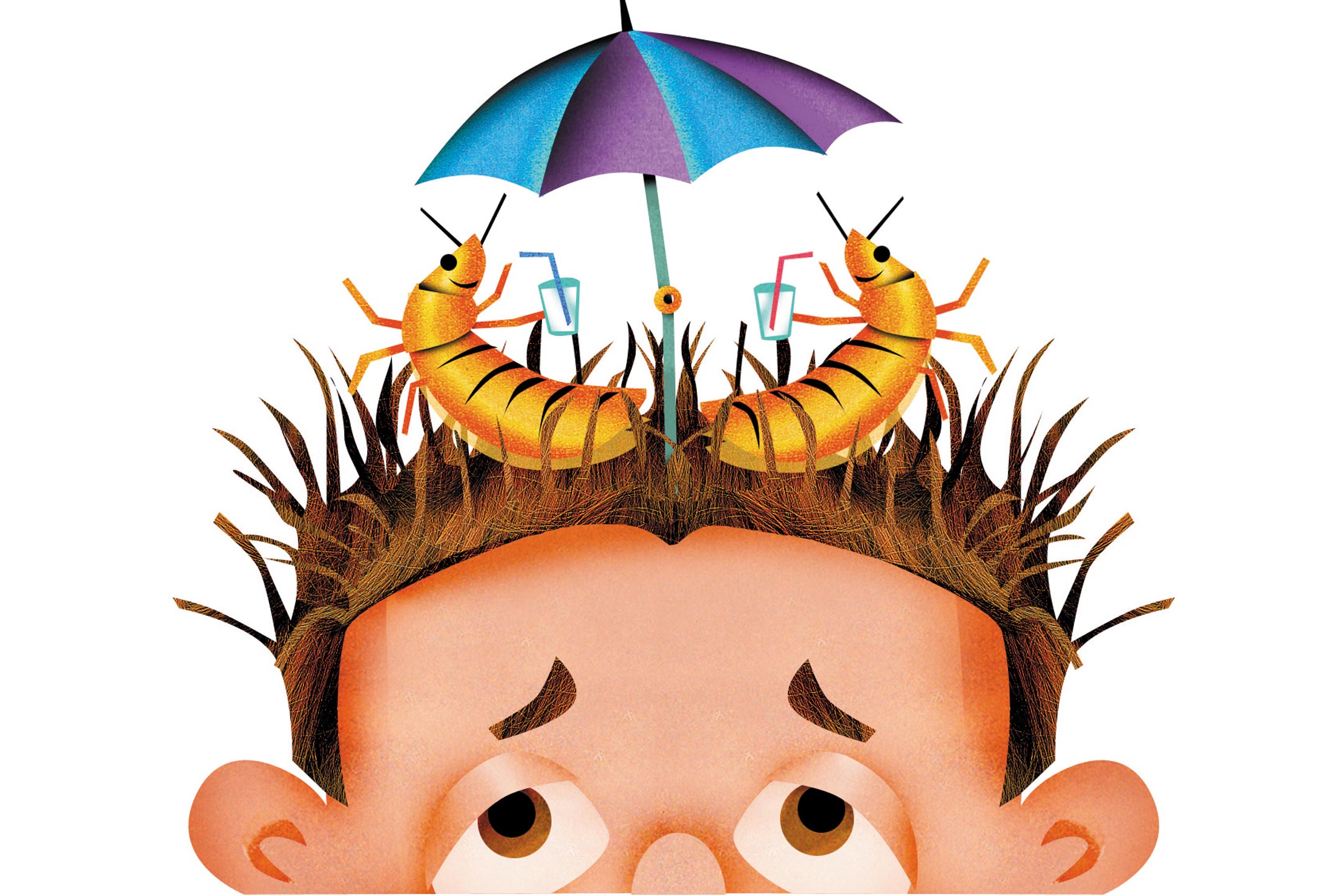
23 Feb The Nit Crowd
Lucy Treloar regards head lice as a great leveller, although they do precipitate the odd social crisis.
My youngest son is standing leaning against the kitchen sink, his head bowed away from me. I’m looking intently, very, very intently, into the furrows I’m ploughing through his hair. The comb is grey steel, with long, close, vicious tines. His scalp is tender and pink. “Ow!” he shrieks when the comb digs too deep.
Yes, they’ve returned. Head lice, that is, or ‘nits’ as I’ve come to know them. Like most parents, I was convinced that nits would never infest my lovely, clean children. But, over time, they’ve become a horribly familiar sight.
Ten years ago treatment was a simple matter – we just poured chemicals all over our children’s heads. And when that didn’t work, we tried the really high-powered chemicals – DDT and Agent Orange, I feared in my worst moments. After all, this was a war.
Each time I treated my children for nits, I was reminded of an episode from the US TV series Northern Exposure that dramatised a conversation between two irate, middle-aged head lice. “We were just sitting there when some idiot threw malathion at us! Can you believe that?” My second son’s impassioned response to the sight of a louse swimming valiant laps of a small cap of neat poison was similar – “Poor thing, it just wants to live. Can’t we save it?”
I suffered enough pangs of doubt – about the poison, not nits’ rights – that when being ‘green’ came into fashion, we tried tea-tree and lavender oils. The children smelled lovely. And I’m sure the nits did too, as they gambolled through the forests of scented hair, like the stars of an air-freshener commercial.
The trouble with nits is that you can have removed every louse on a head of hair, but the eggs will still be superglued in place, biding their time. This is how the ‘conditioner through the hair every night for two weeks’ theory came into being. The idea behind it was that you remove the young lice with the conditioner before they reach breeding age. The beauty of this system was that it actually worked – as long as you stuck to it. Personally, I found it a delight to spend approximately one hour (that is one-twenty-fourth of each day, or one-seventeenth of my waking hours, or about 300 per cent of my available free time) combing through my daughter’s almost bum-length hair, millimetre by painstaking millimetre. But some weak parents who embarked on this nit-removal strategy ended up with fully-fledged obsessive-compulsive disorders, or found themselves at the brink of being committed to a mental institution. Things have progressed a little since then. The latest thing is a sort of turbocharged treatment: conditioner with built-in poison. To my utter amazement, this one works! Well, it has worked. Once.
Parents respond to nits in a variety of ways. One couple I know made a pact with their daughters’ friends’ parents that they would all follow the conditioner routine. They’ve wondered ever since which parents were the quitters. And they’ve had the same suspicious looks directed at them.
That couple are very Zen about lice these days. In fact, they’ve acquired an almost scientific objectivity. “Did you know,” the mother said to me one day, “that brown-haired children eventually develop dark nits and blond children end up with very pale nits? Isn’t that interesting? By the way, would Mimi like to come and play this afternoon?” A social crisis looms. “Oh yes,” I say. “That certainly is fascinating! Gosh, I’d love to see them some time. So sorry, Mimi’s busy this afternoon. Must dash. Bye!”
Another friend regards de-nitting her daughter as a bonding exercise. “It’s a chance for us to be with each other, to chew the fat, to connect. Really. I quite enjoy it. Honestly. I do!” She can’t quite meet my eyes. Still, she is a much nicer person than me. With me, it’s “If you can’t stop hugging all your friends all the time, it’s short hair for you, sweetie!” or “How does this happen? Do you go into a headlock with everyone you meet?”
As far as I’m concerned, the only good thing about nits is that they’re great social levellers. In rural Thailand I watched some women sitting in the sun, companionably delousing each other. They talked and laughed and picked nits – a ‘nitpic’, rather than a picnic. Every now and then there would be a ‘Eureka! moment’, when a louse was caught, briefly inspected and squashed (there is certainly a weird pleasure to this moment).
Living in the First World doesn’t mean that you escape nits. No. It just means that you get to experience the peculiar thrill of hunting them in the privacy of your own home. I focus again on my boy’s head. “Just stay still, darling!” My pinched fingers close in. “Got it!”
Image by Greg Jackson




